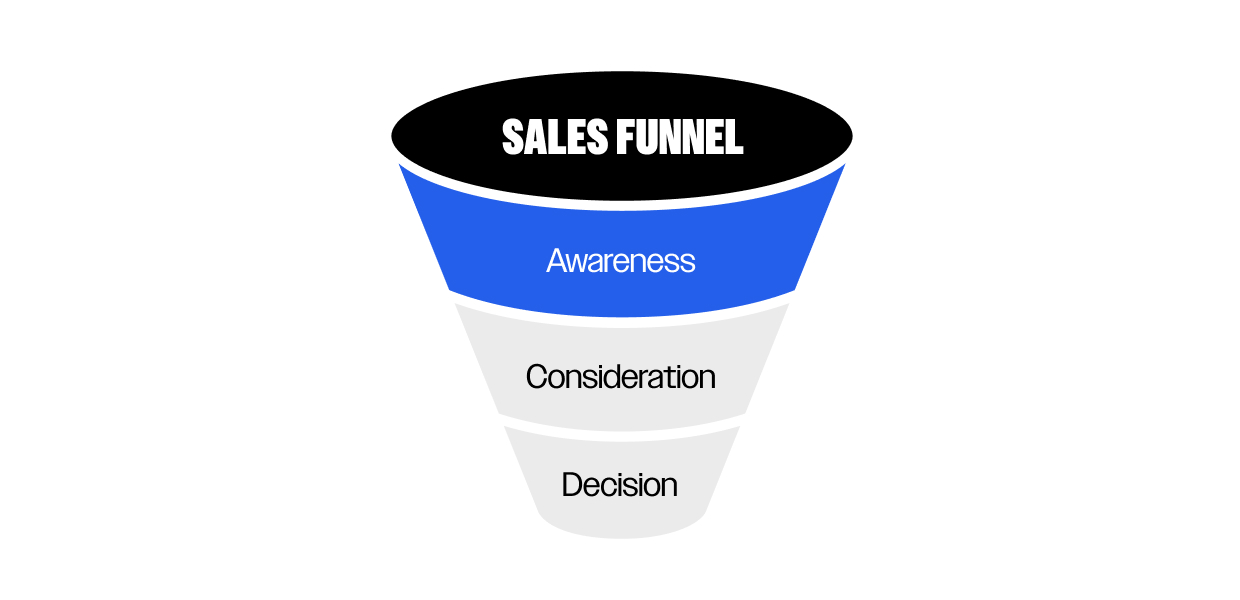Stop Chasing Conversions: Why the First Two Stages of the Buyer's Journey Matter Most
While most B2B marketers obsess over closing content, buyers spend 70% of their journey researching in stealth mode. This guide breaks down why awareness and consideration stage content matters more than everything else combined—and the specific formats that actually move prospects forward at each stage.

It's easy to spend most of your time trying to maximize conversions. But here's thing:
The first two stages of the buyer's journey matter more than everything else combined.
While the textbooks preach "map content to every touchpoint," your buyers are spending 70% of their journey researching in stealth mode. They're Googling at 11 p.m., dissecting your competitor's blog posts, and evaluating approaches long before they'll touch your contact form.

The Awareness Stage: Where Problems Get Named
What's happening in their heads:
Your buyers know something's broken, but they're still diagnosing what. They're Googling symptoms ("Why is our sales cycle dragging?"), not solutions ("Best B2B content marketing agencies for lead generation").
They don't want your pitch. They want clarity on their situation.
HIGH-IMPACT FORMATS:
1. Educational blog posts (800-1,200 words)
Low barrier to entry, SEO- and GEO-friendly, and shareable. Focus on problem identification that helps them name what's breaking.
Example topics:
"Why engineering firms lose deals in the specification phase"
"5 signs your team is drowning in data but starving for insights"
"Why construction companies struggle to differentiate beyond price"
2. Short-form video (60-90 seconds)
High engagement, works across platforms, fits in during a coffee break.
Example: A 60-second video titled "Why your infrastructure projects keep running over budget" that identifies three common design-phase culprits without pitching your services once.
3. LinkedIn thought leadership
Native visibility, algorithm-friendly when done right, positions expertise without requiring clicks.
Example: A LinkedIn post pointing out that renewable energy companies are marketing technology performance while their customers are actually drowning in permitting delays and regulatory red tape."
Key principle: Be the helpful expert who names their problem better than they can. A subtle mention of your expertise is fine but resist the urge to pivot to your services too early. Remember, you’re building credibility here, not pushing for a commitment OR think of this like a blind date. You want to show them why you’re a catch, not give them a list of your best qualities and expect them to believe it.
.jpg)
The Consideration Stage: Where Buyers Weigh Their Options
What's happening in their heads:
Problem defined. Now they're shopping for approaches, not vendors. They want to understand competing methodologies, what excellence looks like, and which path fits their reality.
HIGH-IMPACT FORMATS:
1. Comparison guides
Position yourself as an advisor, not just a vendor. Help prospects weigh different approaches in your space.
Example: An engineering firm creates "3 approaches to seismic retrofitting (and when each one makes sense)"—evaluating different methodologies with clear pros, cons, and fit criteria.
2. Webinars or video workshops (30-45 minutes)
Demonstrates expertise, captures genuinely interested contacts.
Example: A renewable energy company hosts "How to navigate interconnection queues: A developer's planning guide"—walking through the permitting process, common bottlenecks, and timeline strategies.
3. Problem-focused case studies
Shows proof without feeling salesy, demonstrates strategic thinking.
Example: A data visualization SaaS company writes "How a logistics company reduced reporting time from 3 days to 3 hours"—focusing on operational transformation, not just software features.
Key principle: Help them evaluate options without pushing your specific solution. Build trust through education, not persuasion.
The Reality Check: Where to Actually Put Your Energy
If you can only do three things well, make them count:
Educational blog posts (Awareness) - your organic reach workhorse
Comparison guides (Consideration) - the trust engines
One knockout case study (Decision) - the proof point that closes
Your secret weapon: Ruthless repurposing. One webinar spawns a blog post, a LinkedIn carousel, five social posts, and an email series. You're not creating more—you're extracting more value from what you build.
Focus 70-80% of your content efforts on Awareness and Consideration. That's where buyers spend their time during research. That's where you build the relationship before they ever talk to sales.
What to stop doing right now:
Building Decision-stage content when you have zero Awareness presence
Gating everything behind forms when prospects don’t trust you enough to offer their contact information yet
Talking about your product in content meant to help them diagnose their problem
Those buyers researching at 11 p.m.? They're not ready to talk to you yet. But when your content helps them see their problem clearly, understand their options thoroughly, and feel confident in their evaluation? They'll remember who lit the path when decision time comes.
What to Do Next
Ready to move? Here's your play:
Audit what you've got - Tag your last 20 pieces: Awareness, Consideration, or Decision. The gaps will jump out at you.
Find your highest-leverage opportunity - All Decision-stage content but invisible at Awareness? Nobody knows you exist until they're ready to buy -–and by then, it’s way too late. Strong at Awareness but weak during Consideration? You're not building trust at the critical evaluation moment.
Pick 2-3 formats you can nail consistently - Stop trying to master everything. Choose what fits your strengths and your bandwidth, then dominate those formats.
Map out 90 days of strategic content - Laser focused on Awareness and Consideration. One excellent piece per week beats seven mediocre posts every time.
The buyer's journey doesn't demand content volume. It demands strategic placement.
You can't be everywhere. But you can own the moments that matter.